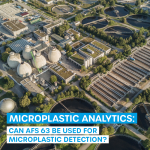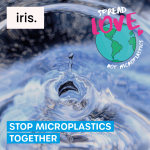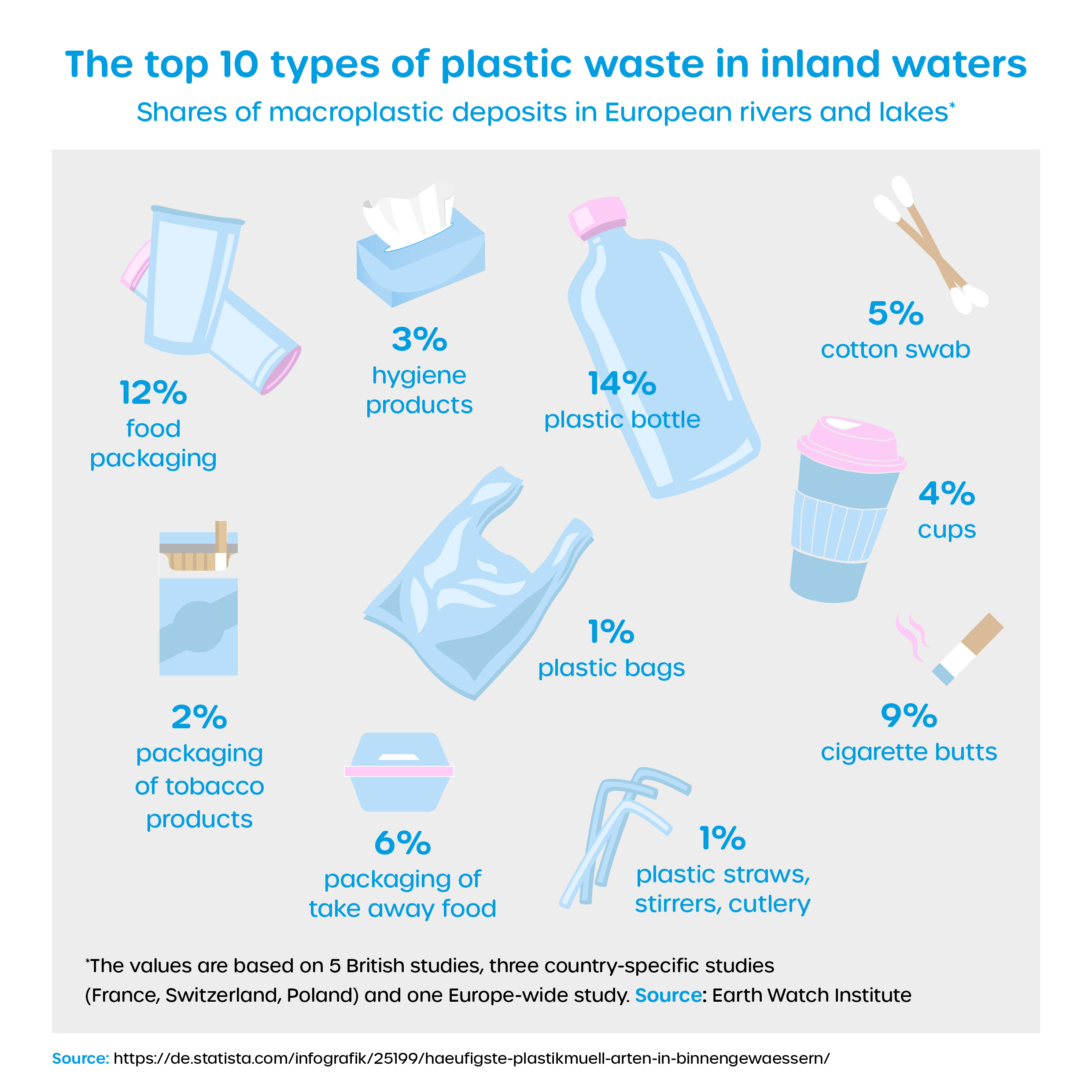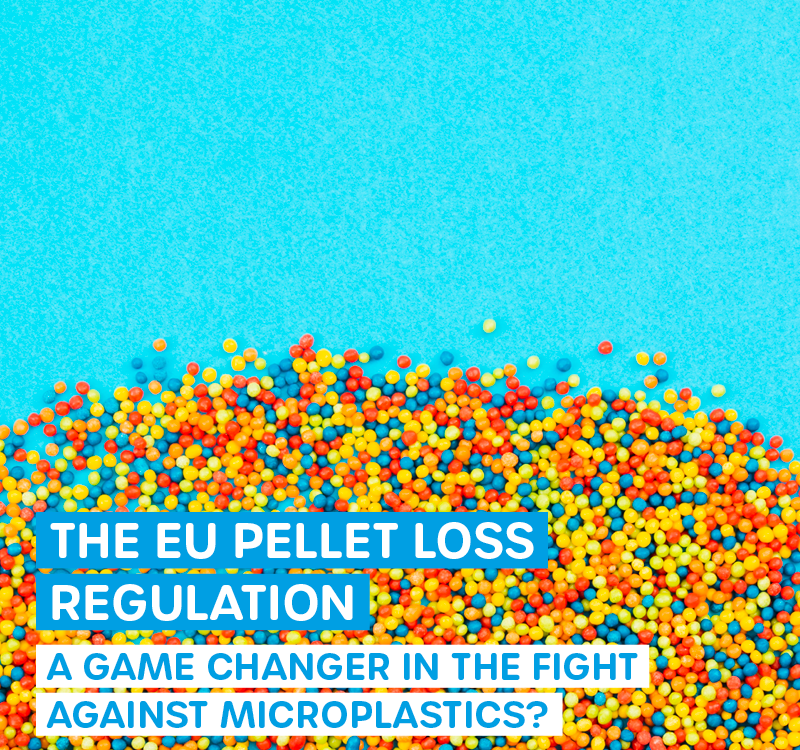
AFS 63 and Microplastics Analytics
29. September 2025
Stop Microplastics Together
6. October 2025Ocean Bound Plastics: Between Marketing Myth and Ecological Reality
The following is a critical scientific analysis and evidence-based investigation of Ocean Bound Plastics, recycled products, and virgin plastics - beyond marketing rhetoric.
The core argument upfront: Ocean Bound Plastics are primarily a marketing instrument, not an ecological game-changer
Companies using Ocean Bound Plastics (OBP) in their products market this as a solution to the plastic crisis, but scientific facts paint a sobering picture. This article exposes marketing traps, analyzes the actual ecological impacts, and shows what a genuine transformation of the plastic economy must look like.
What are Ocean Bound Plastics really?
Ocean Bound Plastics were defined in 2015 by Dr. Jenna Jambeck and colleagues in the journal "Science" as "improperly disposed plastic waste generated by populations living within 50 km of a coast that could potentially enter the ocean as marine debris."
Most plastics advertised as "Ocean Bound" do not come from the sea, but from coastal regions - before they even reach the ocean.
And this is where the marketing loophole opens up, because contrary to what many people assume, Ocean Bound Plastics are not plastic waste from the world's oceans. However, this is exactly what most manufacturers suggest through clever advertising photos and video clips. Large corporations such as Adidas and Coca-Cola systematically exploit this confusion of terms.

Overview of the most common types of plastic waste in inland waters © Wasser 3.0
What is the difference between Ocean Bound Plastic and Ocean Plastic?
Ocean Bound Plastic:
- Plastic waste that is still on land but at risk of entering the ocean
- Mostly waste within a radius of about 50 km from the coast or waterways
- Often found in areas with inadequate waste management
- Can still be collected and recycled before it reaches the oceans
- Often used in recycling programs to prevent marine pollution
Ocean Plastic:
- Plastic waste that has already entered marine environments
- Floats in the sea, lies on the seabed, or has been washed up on beaches
- Often damaged by salt water, UV radiation, and mechanical action
- More difficult to collect and recycle due to degradation and contamination
- Also includes microplastics created by decomposition
The main difference is that Ocean Bound Plastic is collected preventively to stop it from becoming Ocean Plastic. Ocean Bound Plastic is therefore usually in better condition and potentially more suitable for recycling processes.
When it comes to the hard facts, Ocean Bound Plastic performs worse than conventional recycling: Insights into the Life Cycle Assessment (LCA)
Scientific LCA studies by the Association of Plastic Recyclers show clear advantages for recycled plastic: Recycled PET requires only 24% of the total energy of virgin PET and causes only 41% of greenhouse gas emissions.
Concrete figures (per kg plastic):
- Virgin PET: 61.4 MJ energy, 2.23 kg CO2-equivalent
- Recycled PET: 14.8 MJ energy, 0.91 kg CO2-equivalent
- Virgin HDPE: 75.3 MJ energy, 1.89 kg CO2-equivalent
- Recycled HDPE: 8.7 MJ energy, 0.56 kg CO2-equivalent
Furthermore, additional scientific analyses show that utilizing the waste as raw material is hardly feasible. The preparation of a ton of waste so that it can be further processed as raw material costs 20,000 euros. In practice, this is neither profitable nor ecologically sensible. With many marine plastic articles, the energy and environmental balance would likely turn out poorly because of the recycling process.
If you were to do a serious life cycle assessment, it would be devastating for clothing made from 100% recycled material.
And this is what happens: Marketing Traps and Incorrect Communication Exposed
Greenwashing Technique 1: Conceptual Confusion
Adidas uses a classic greenwashing technique here by making statements for which it then provides no evidence. On inquiry, the corporation also admits that the plastic comes from beaches and coastal regions and was recycled there before it could reach the ocean.
Greenwashing Technique 2: Distraction Maneuver
Coca-Cola announced in 2019 that its disposable bottles would consist of 25% marine plastic in the future. However, this is meant to distract from the fact that Coca Cola is the world's largest generator of packaging waste. The company alone is responsible for more than 3 million tons of plastic products annually.
The Reality: Minimal actual marine plastic content
Clothing made entirely from ghost nets or marine debris does not exist. In the material mix, they can only be contained in small proportions. Unlike what advertising promises, we hardly eliminate waste from the oceans with our purchase because ghost nets are difficult to recover and recycle.
Why are Ocean Bound Plastics so extremely expensive?
- Complex collection process:
- Collection in remote coastal regions
- Manual sorting of different plastic types
- Transportation from areas that are difficult to access
- Complex processing:
- Removal of salt, sand, and biological residues
- Sorting of heavily degraded materials
- Complex cleaning processes
- Low material quality: The collected material is often heavily degraded and only suitable for low-grade applications.
- A comparison of the costs per ton of processed PET reveals the entire dilemma:new: 1,100 – 1,300 euros/ton (2024)
- conventionally recycled: 1,250 – 1,300 euros/ton (flakes, 2024)
- Ocean Bound Plastics: 15,000 - 20,000 euros/ton (2022)
An example: the production cost of a simple letter opener made from Ocean Plastics are estimated at 200 euros.
Approaches to Real Transformation: EU Circular Economy as a model with systemic approaches instead of treating symptoms
The EU Strategy for Plastics in a Circular Economy pursues an ambitious approach for the recyclability of plastic packaging and contains a strong response to microplastic, which represents a significant source of marine pollution. Concrete transformation strategies include:
- Design for Circularity
By 2030, all plastic packaging on the EU market should be either reusable or cost-effectively recyclable.
- Extended Producer Responsibility (EPR)
EPR systems obligate manufacturers to take responsibility throughout the entire life cycle of their products.
- Prevention before Recycling
The fundamental problem is that too much is produced and thrown away. 40 % of clothing is produced to be thrown away because it is cheaper than producing less at higher unit costs.
The Sobering Balance from the Ocean Bound Hack
Ocean Bound Plastics is not the ecological revolution it is marketed as.
The scientific data shows:
- Energy balance: 10-20 times worse than conventional recycling
- Costs: 20 to 25 times more expensive than virgin plastics
- Availability: Actual marine plastic practically not recyclable
- Greenwashing risk: Extremely high
Real change requires a circular economy – systemic measures and long-term solutions instead of short-term consumption strategies. We need more priorities for genuine plastic transformation:
- Drastic reduction of plastic production (especially single-use products)
- Design for Circularity with mandatory standards
- Massive investments in mechanical recycling for pure streams
- Extended Producer Responsibility with complete cost transfer
- Ocean Bound Plastics only as a niche solution with transparent life cycle assessment
Ocean Bound Plastics do not solve the plastic crisis - it prolongs it through greenwashing and distraction from systemic solutions. The future lies not in elaborate recycling of marine plastic, but in the drastic reduction of plastic production and building a true circular economy.
Those who want real climate protection must see Ocean Bound Plastics for what they are: An expensive marketing instrument that distracts from necessary systemic changes.






